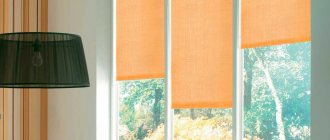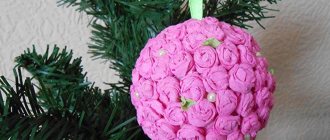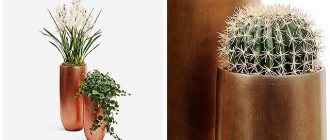Gardeners select exotic plants for a beautiful flower bed. To ensure that unusual flowers delight the eyes for a long time even on cloudy autumn days, they acquire a perennial aster. During this period, she amazes with a riot of colors and becomes a real queen of flower beds. Photos of perennial asters amaze with their diversity and inspire you to create interesting compositions in the garden.
This flower is found in many countries around the world. It got its name because of its shape. The small stars of the inflorescences are compared to celestial bodies and fireworks.
Types of aster
The flower can be found in many gardens and is deservedly popular among gardeners. This amazing plant was cultivated 500 years ago. Aster can have different stem heights and can withstand the first frosts.
There are more than 500 types of these delicate flowers, but only a small amount is used in landscape design. Depending on the variety, the plant pleases us in summer and autumn. Depending on the time of flowering, the following types are distinguished:
- early plant, blooming from May to late June;
- summer varieties that delight us with their beauty from July to August;
- autumn flowers decorating flower beds during the autumn months.
Multi-colored stars will be a magnificent decoration for the front garden of a country house. They will delight owners and guests with their splendor even on rainy autumn days.
Features and rules of landing
Flowers are planted more often in early spring, when the soil has already warmed up. For the southern regions, planting begins in mid-April, for the northern regions from the end of May. Planting is carried out on the sunny side during a period when the temperature is above 15 degrees. If frosts are possible at night, cover the young seedlings with plastic wrap. Asters bloom profusely only in a well-lit place. Gardeners' recommendations:
- They are planted either with already grown seedlings or through seedlings. The latter is being grown at home.
- A mixture with the addition of superphosphate is purchased in advance for planting.
- Early asters will begin to bloom 3 months after germination, medium ones after 3.5 months, late ones after 4. The exact period is indicated on the package.
Complex fertilizer will help speed up flowering. The planting part is distributed in grooves, flowers are planted at a distance of up to 30 cm. The crops need thinning and weeding. Experienced gardeners plant both in spring and before winter. The photo shows a flower bed with asters planted in spring.
Important! The depth of the hole should not exceed 2 cm.
Photos of aster flowers in the garden look interesting. From different varieties you can create an original multi-colored composition. At the beginning and end of the season, flowers need support, fertilizer is applied, and the soil is spilled with boiling water and diluted potassium permanganate. Asters do without heavy watering, tolerate drought well, but are sensitive to lack of light. The photo shows an example of what asters look like in landscape design .
Early perennial alpine aster
The low-growing plant is the most common type. It looks great along paths and is used for planting at the edges of flower beds. Single inflorescences come in different colors.
Varieties popular with gardeners: white “Albus”, pinkish shades “Rosea”, light blue “Gloria”. Aster "Happy End" is ideal for mixed compositions.
Perennial asters for the autumn garden
There is probably no gardener who does not grow perennial asters. After all, only they, and perhaps chrysanthemums, decorate the dull autumn landscape of falling asleep nature with lush, bright blooms that last until the onset of snowy winter.
Perennial asters are amazingly beautiful flowers, distinguished by an extraordinary variety of sizes, shapes and colors. Currently, there are more than 600 species and varieties of this beautiful herbaceous plant.
Perennial asters attract even novice amateur gardeners, as they are very unpretentious and do not require such careful care.
Today we will talk to you about perennial asters, their history, agricultural technology and the most common species that tolerate any climate well and are not afraid of severe frosts.
In addition, we will offer you the most fashionable and popular varieties of perennial aster from our unique collection.
A LITTLE HISTORY
Aster is one of the oldest plants on earth. It was grown as a cult plant in Ancient China and Ancient Greece. It was the Greeks, well acquainted with astronomy, who gave the name to the flower - “aster” (translated from Greek - star), seeing the similarity between the shape of the flower with distant, twinkling stars.
Many mysterious myths, legends and beliefs are associated with the aster. According to one of them, the seeds of asters appeared from star dust, into which the tears of the goddess Aphrodite, mourning her lover, turned.
That is why the altars of ancient Greek temples built in honor of this goddess were decorated with images of blooming aster.
Every nation has its own myths. Many of them were built in Ancient Greece, Ancient China and Ancient Rome. They all talk about the magical power of the aster flower, which can ward off evil spirits from the home and establish peace in the family.
To get rid of black forces, the Greeks and Romans planted many asters around their homes, and on holidays they decorated themselves and their homes with garlands woven from asters.
From Ancient Greece, asters came to Crimea, as evidenced by archaeological excavations of Scythian settlements in the Simferopol region.
But the aster was brought to Europe from China in 1728. The seeds of this rare flower came to the French breeder Antoine Jussier, who worked in the Royal Botanical Garden. There he developed the first large-flowered varieties of perennial aster.
Most fall perennial asters are native to North America. The flowers of wild aster were blue, light blue and purple. But due to the enormous interest of botanists from different countries in the selection of a new long-flowering plant, by the beginning of the 19th century, cultivated forms and varieties with white, pink, red and lilac inflorescences were developed.
The most extensive work on aster selection was carried out in Germany. It was in this country that most of the varieties and garden forms that are still grown today appeared.
By the end of the 19th century, scientists from the USA, Denmark, Sweden, Poland, the Czech Republic and Bulgaria began breeding aster. In our country, this work began in the 30s of the last century. As a result, many very bright, large-flowered varieties of perennial aster have appeared.
PERENNIAL ASTER: BIOLOGICAL PORTRAIT
Perennial asters belong to the Aster family. Their leaves are small and dark green. The central stem is very strong, covered with numerous hairs.
Inflorescences are baskets with a diameter from 2 (small) to 18 (very large) cm. Flowers can be simple, semi-double or double. Their coloring is monochromatic or two or three colors and includes all the colors of the rainbow.
Perennial asters grow in the form of a bush, the shape of which can be columnar, oval, round spherical, pyramidal, and spreading.
According to height, perennial asters are divided into:
short - 10 - 30 cm high;
medium height – 31 – 55 cm;
tall – 56 – 100 cm;
very tall - from 105 to 170 cm.
The root system of asters is fibrous, superficially going 20 - 25 cm deep.
Flowering dates. According to the timing of flowering, asters can be divided into three groups:
early (May-June);
summer (July-August);
autumn (September-November).
Gardeners almost never grow early and summer asters, because a great variety of more beautiful flowers bloom at that time. But almost all flower lovers plant autumn perennial asters to brighten up the dull picture of fading nature.
Due to the timing of flowering, autumn perennial asters are also called “September” or “October” in many countries. They disappear under the snow in lush colors, ending the past summer season.
Types of perennial asters. There are more than 30 species of perennial autumn asters. But many of them are thermophilic and cannot winter in the harsh winters of the northern regions of our country.
Therefore, in the north and central regions, three types of all-weather perennial asters are planted: Bush, New Belgian (Virginian) and Heather.
It is their best varieties that we have prepared for you. We will talk about them at the end of this article.
Bush aster . These asters are very unpretentious and undemanding to soil. Their stems are soft and pubescent. The height of the bushes varies depending on the variety from 40 cm to 1 m.
The bush is literally strewn with numerous inflorescences with a diameter of 3–5 cm, so that sometimes even the leaves are not visible. These are very reliable, stress-resistant asters that are not afraid of severe frosts in winter and are almost never damaged by pests.
New Belgian (Virginian) aster . This is a strong, powerful plant, with strong, woody stems without pubescence, which can reach a height of 160 cm.
The inflorescences are large panicles, up to 5 cm in diameter. The flowers are mostly pinkish-lilac. The inflorescences are arranged so densely that the leaves are practically invisible behind them.
Heather aster . It differs from other species in the pyramidal shape of the bush, with drooping inflorescences. Plant height – up to 1 m.
The flowers of the heather perennial aster are small (up to 2 cm in diameter), but there are so many of them that they create the illusion of a beautifully woven carpet thrown over a spreading bush.
The color of the flowers is usually light (pale pink, white, golden cream, pale blue). This species is truly the best decoration for any autumn garden.
PERENNIAL ASTER: PLANTING AND CARE
Perennial asters are very unpretentious; the main thing is to find them the right place to plant and prepare fertile soil.
Boarding time . The survival rate of perennial asters is almost one hundred percent. They can be planted in both spring and autumn. Even flowering bushes can be replanted.
Landing place . It should be open and sunny. After all, for long autumn flowering, plants need to be provided with maximum heat and light.
You cannot plant perennial asters in lowlands where water stagnates, otherwise the roots and stem will begin to rot. It is best to make a flower bed for them with a height of 40–50 cm.
Soils . Asters need soil that is very fertile, light, loose, well-permeable to water and air, with a neutral or slightly acidic reaction environment. Perennial asters will not grow on heavy clay and acidic soils.
These must first be neutralized with dolomite flour (at the rate of 2 kg per 5 sq. m of flower bed).
Landing. Since the powerful root system of perennial asters grows quickly, and the flowering becomes less bright and lush, grow these flowers in one place for no more than 5 years.
Then their rhizomes need to be divided and planted in separate flowerbeds. Carry out this operation in late August - early September, or early spring.
Depending on the variety (and tallness), plant perennial asters at a distance of 35–50 cm (short) and 65–100 cm (tall).
When forming flowerbeds for digging, add (per 1 sq.m. area): 2 buckets of rotted manure or compost, 2 buckets of fine river sand, 2 buckets of leaf soil, a bucket of wood ash, 2 tbsp. spoons of double superphosphate and potassium sulfate.
The diameter and depth of the planting holes is from 20 to 40 cm (depending on the variety).
After planting, water the flower bed well with warm water (at the rate of 2 watering cans per 1 sq. m).
Watering. Asters are in dire need of water during dry times. Then give them at least three deep waterings per week. But in a normal summer, one is enough for them.
Fertilizer . In the spring, after the snow melts, feed perennial asters with urea solution (at the rate of 2 tablespoons per bucket of warm water per 1 sq. m of flower bed).
In June, feed the plants with a solution of slurry (at a concentration of 1:10 with water).
In August, feed your perennial asters with potassium-phosphorus fertilizer in the same dose as when planting. At the beginning of October, give the plants some ready-made mineral complex for autumn feeding of perennial flowers, in the dosages indicated on the package.
Preparing for winter . At the end of October - beginning of November, after the first frosts, cut off the above-ground part of perennial asters, leaving stumps 5 - 7 cm high. After this, loosen the soil around the bushes and cover them with dry leaves in a layer of 40 cm. This will be enough for any type of perennial asters.
In the years following planting, you may not need to cover perennial asters at all, as they have increased frost resistance.
PERENNIAL ASTER: THE BEST VARIETIES FROM OUR COLLECTION
Now that you know how to grow perennial asters, we offer you the best varieties from our collection, which you can buy from us or order for spring today.
Shrub: Stars Set, Peter Harrison, Jenny, Blue Lagoon.
New Belgian: Winston Churchill, Red Brocade, Friendly, Marie Ballard.
Vereskovaya: Snow town.
You can read more about all these varieties on our website or in the “Spring 2021” catalogue.
Summer asters
This amazing Italian flower is a perennial. These flowers look great along a fence. Known varieties: “Lady Hindlip” has a rich pink color, “Veilchenkoenigin” is able to adapt to extreme conditions.
The Bessarabian aster differs from the Italian flower in size. The most common varieties: reddish-purple “Rubellus”, purple “Cassubicus major”.
Purple, red and pink asters
Annual Astra Irva
Medium flowering variety.
Variety - Artistic.
Bush 40-45 cm high. Peduncles are very durable. Rich red terry inflorescences, medium density, 10 cm in diameter.
The Irva variety is resistant to fusarium.
Annual Astra Irva
Annual aster Pompom red and white
Variety type - Pompon.
Medium flowering variety. Bush up to 75 cm high. The color of the inflorescences is red with a white center, up to 6 cm in diameter.
Annual aster Pompom red and white
Astra annual Lyubka
Universal variety of aster.
Bush 45-50 cm high. Peduncle of medium strength. The inflorescence is slightly fragrant, strongly double, 4 cm in diameter, mostly carmine in color, with a white-cream center.
The resistance of the Lyubka variety to unfavorable weather conditions is strong, resistance to fusarium and jaundice is strong.
Astra annual Lyubka
Astra annual Midi
The variety is intermediate between Radio and Dwarf Royal.
Early flowering variety. Bush up to 40 cm high. Double inflorescences, medium density, 6 cm in diameter.
Astra annual Midi
Astra annual Beloved
The variety is universal.
Garden group - Pompons.
Bush 60 cm high. The inflorescence is slightly fragrant, ruby in color, dense, highly double.
The Favorite variety is resistant to adverse weather conditions, fusarium and jaundice.
Astra annual Beloved
Aster annual Raspberry ball
Variety type - Pompon.
Medium flowering variety.
The bush and flower stalks are very strong, the plant is 58-62 cm high. The raspberry inflorescences are double, with a diameter of 7-9 cm.
The Raspberry Ball variety is relatively resistant to septoria and fusarium.
Aster annual Raspberry ball
Astra annual Khava bouquet
A universal variety of early flowering aster.
Variety type - Rose-shaped - Victoria.
Bush 60 cm high. Pink-carmine terry inflorescences, medium density, 6 cm in diameter.
The Khavsky bouquet variety is resistant to adverse weather conditions and is relatively resistant to fusarium and septoria.
Astra annual Khava bouquet
Astra annual Maria
A universal variety of medium and medium-late flowering.
Variety type - Duchess.
Bush 60-70 cm high. Inflorescences are deep pink, densely double, medium density, 10 cm in diameter.
The Maria variety is relatively resistant to fusarium and tolerates frosts down to -5°C.
Astra annual Maria
Aster annual Lilac fog
Universal variety.
Garden group - Pompons.
The plant is 45 cm high. The inflorescence is lightly fragrant, dense, highly double, light lilac.
The Lilac Fog variety is resistant to adverse weather conditions, pests and diseases.
Aster annual Lilac fog
Astra annual Nonna
Early flowering aster variety.
Bush 60 cm high. Inflorescences are pink, medium density, 7 cm in diameter.
The Nonna variety is resistant to fusarium.
Astra annual Nonna
Autumn flowers
This is the largest group. The New England flower is a tall growing species. It is planted closer to the center of the flower garden or along the fence. Varieties that are popular: lush “Bars Pink”, graceful “Gerberose”.
The New Belgian aster is also in demand. Many flowers appear on it, so leaves are often not visible. Famous varieties: pyramid-shaped plant “Amethyst”, “Ballatd” is distinguished by bright inflorescences.
The bush aster looks great in the garden. Popular varieties of this species: semi-double inflorescences “Alba Flor Plena”, lilac-blue “Blue Bird”, dwarf type “Venus”.
Lilac clouds: the most beautiful varieties of autumn asters
The daylight hours are decreasing, the sky is clouded with gray clouds and it seems that the world is plunging into a black and white sleep.
But - not a garden! Here, perennial asters of various species and varieties, the “daisies” of which are painted in different tones of pink, blue and purple, disperse the autumn blues with colorful fireworks. Well, when these profusely flowering herbaceous perennials appear in company with ornamental grasses, echinacea, sedums and dahlias with inflorescences of different colors and shapes, you get the feeling that summer, contrary to the laws of nature, has never gone away. In the photo: the flower garden looks enchantingly colorful and lush with the bush aster 'Rosenwichtel' and 'Sapphire', as well as the New Belgian aster 'Fuldatal' and the ericaceous aster 'Pink Star'. The composition is complemented by heucheras, navel and ornamental grasses.
The flower garden looks enchantingly colorful and lush with the bush aster A. dumosus 'Rosenwichtel' and 'Sapphire', as well as the New Belgian aster 'Fuldatal' and the ericaceous aster 'Pink Star'. " _ _ _ _ _ _ height" is only 50 cm.
Ads by
Dossier: New England aster, New Belgian aster
- Latin name : Aster novae-angliae, Aster novi-belgii.
- Flowering : from September until cold weather, flowers are purple, blue and pink, as well as white.
- Height : depending on the variety 50–150 cm.
- Place of growth : sun; fertile, humus-rich, moderately moist soil.
- Care : pruning close to the soil after flowering; feeding with compost in the spring.
In the photo: the bouquet shimmers with all shades of purple and pink.
Raspberry and sage shoots act as companions to beautiful asters. The bouquet shimmers with all shades of purple and pink.
Advice : New Belgian aster is more suitable for cutting, since the flowers of its New England sister close when they move into a vase.
Most of these plants bloom tirelessly from September to November and often disappear under the snow in abundant bloom. Over the course of the time allotted by nature, the bright beauties take on the appearance of lush hemispherical bushes, under the flower cap of which sometimes the leaves are not even visible.
A good candidate for the garden is New England aster 'Andenken an Paul Gerber'. This 1.5 m tall plant is resistant to lodging and is little susceptible to such scourges as powdery mildew. 'Alma Pötschke' needs support. In the photo on the right, this pink New England aster is tied to a fence. The plant reaches 1.2 m in height and blooms in September - October, and in the south - in November.
Left: New England aster 'Andenken an Paul Gerber'. Right: 'Alma Pötschke' The tandem of blue-violet New Belgian aster 'Schöne von Dietlikon' and pink New England aster 'Rudelsburg' captivates with the charm of rustic simplicity.
A tandem of New Belgium aster 'Schöne von Dietlikon' and New England aster 'Rudelsburg' 'Herbstschnee' with white flowers is a rare specimen in the predominantly pink-purple assortment of New England aster. This plant reaches a height of 1.4 m and blooms in September–October.
Left: 'Herbstschnee'. Right: 'Rosa Perle'
Butterflies and bees love long-flowering plants. Aster novobelgica 'Rosa Perle' (pictured above right) opens its pink buds in early autumn.
Important : tall varietal plants need to be tied to supports or purposefully selected options that are resistant to lodging (for example, 'Andenken an Paul Gerber' in the New England aster assortment, as well as 'Karminkuppel' and 'Rosa Perle' - New Belgian aster).
Advice : to increase resistance to lodging, on the eve of bud formation, it is advisable to shorten the tops of the shoots by approximately 20 cm.
The main enemy of asters is powdery mildew. If this disease frequently affects plants in your garden, take a look at the selection of hardier New England garden stars.
Using our market, you can always compare prices from online gardening stores and choose perennial aster seeds for your garden.
Alpine aster Pink Snow Queen, 0.1 g Frost resistant! 23 rub.
seedspost.ru
Alpine aster Stained glass, Mixture, 0.1 g 27 rub.
seedspost.ru
Aster perennial Italian Rudolf Goethe, 0.1 g 28 RUR
seedspost.ru
Perennial Alpine aster, Mixture, 0.1 g 25 rub.
seedspost.ru
In a flower garden, tall species should be planted in the center or in the background, and low-growing species, on the contrary, along the edge of the lawn or path. Thanks to this construction, the planting looks especially beautiful, since low representatives of the flora cover the lower stems of their lanky counterparts, which are often exposed, especially when there is a lack of moisture in the soil.
Dossier: bush aster
- Latin name : Aster dumosus
- Flowering : September – October; buds come in different shades of purple, blue and pink, as well as white
- Height : depending on the variety 15–50 cm
- Place of growth : sun; fertile, humus-rich, moderately moist soil
- Care : pruning close to the soil after flowering; fertilizing with compost in spring; dividing bushes every 3–4 years.
Shrub aster is suitable for growing in pots.
'Blue Lapis', 'Pink Topas' and 'Sapphire' are displayed on the shelves. Shrub aster is suitable for growing in pots
The shrub aster 'Lady in Blue', only 40 cm tall, is strewn with numerous semi-double flowers. This compact beauty is an excellent border plant for flower beds.
Bush aster 'Lady in Blue'
, flax aster (A. linosyris) is an excellent option . Later, the flowers of the plant will turn into fluffy balls that will decorate the landscape in winter.
For a flower garden with dry soil, flaxseed aster is an excellent option.
Less known, but just as beautiful, are some other “guises” of our heroine: the heart-leaved aster (A. сordifolius), the Pringle’s aster (A. pringlei) and the ericoid aster (A. ericoides). Their flowers are smaller than those of their more popular sisters, but in number they are in no way inferior to them.
In the photo: small-flowered Pringle's aster 'Pink Star' towers over bush aster of various varieties, dahlias and large sedum. Flower clouds hover almost above the terrace.
Floral clouds hover almost above the terrace
Photo: archive of the magazine “Mein schöner Garten”.
Preparing the plant for planting
You should choose the right place to grow flowers. To get a gorgeous bush, it is better to choose a sunny area. Obtaining lush flowers is possible with good lighting.
If you plan to grow several varieties, then planting aster is carried out in accordance with the height of the plants. It is necessary to select varieties so that they do not shade each other and look harmonious in the area allocated for them. Low-growing compact varieties are chosen to frame paths in the garden.
This flower loves loose soil; during its growth, fertilizers must be applied. They will ensure lush flowering. The soil must be perfectly permeable to moisture. If there is stagnation of water, the growth of the aster will slow down. Gardeners dig up the soil and apply fertilizer to prepare a place for the plant.
Possible difficulties when growing asters
Annual asters are unpretentious and do not cause additional difficulties for gardeners. However, sometimes it can be difficult to choose the watering mode. If the flowerbed is very neglected, it is also difficult to get rid of weeds and excess plant sprouts. But the beauty of the flower garden is worth it.
Astra is the queen of the autumn garden. These are one of the most famous and popular flowers among gardeners. Usually associated with autumn, when the time for all other flowers in the garden ends, asters still attract attention with their bright colors. Thanks to them, the garden is beautiful and teeming with life until the first frost.
This article presents perennial varieties of asters with photos of popular and interesting specimens.
Planting perennial aster
It is better to plant the plant in spring; purchase seeds or seedlings at specialized retail outlets. The flower is also propagated by cuttings and dividing the bush. Alpine aster is planted with seeds; this method is not suitable for other types.
Seeds are sown in autumn, but it is better to choose spring for this, when the sun's rays warm the soil. In autumn, the plants are transplanted to a selected area in the garden. They need to be looked after: loosened and fertilized in a timely manner. They need good watering.
Types of asters for growing in the country
Peony aster
Gardeners plant different types and varieties of asters in the garden. But the most popular perennials are:
- Chinese . Their height varies from 20 cm to 1 m. The root system is located in the ground at a depth of 20 cm. The stems are green (sometimes red), the structure is bushy. The buds are distinguished by a variety of shades and degree of terry. Their diameter ranges from 3 to 11 cm;
- American _ They bloom from late autumn until the first frost. They grow from 1.5 to 2 m in height. Colors can be: pink, purple, lilac, red, crimson. Inflorescences are semi-double;
- Mongolian _ They bloom in mid-summer. The height of the bushes reaches 1 m. The flowering of these varieties is abundant and colorful. Flowers love sunny places and can withstand severe frosts;
- alpine dwarf . Plants with straight and small stems. The inflorescences are single, with a diameter of 3 to 8 cm. The height of the flower varies from 10 to 40 cm. The colors can be: bright pink, dark purple, white, dark blue;
- Italian . Their height is 70 cm. The diameter of the flowers is 5 cm. They begin to bloom in mid-summer. Popular shades: dark blue, pink, purple;
- zinnias _ The height ranges from 20 to 100 cm. The diameter of the buds reaches 4 cm. This is one of the most common varieties, often decorating landscape designs.
Important: perennial asters grow well for 6 years.
As for annuals, they are planted for cutting into buds or for decorating flower beds. Popular garden varieties include:
- peony-shaped . Annuals, up to 70 cm high. Flowers are very large (up to 15 cm in diameter);
- chrysanthemum-shaped . Outwardly they resemble chrysanthemums. Height – 65 cm, bush shape – pyramidal. The flowers are large, up to 10 cm in diameter. Up to 10 buds bloom on the bush at the same time;
- spherical . Low varieties up to 45 cm. About 15 medium-sized buds bloom simultaneously on one plant.
Aster chrysanthemum
Growing from cuttings
Plants are prepared for propagation in the spring with the onset of the warm season, when the first shoots appear. Cuttings are the most common way to grow asters. To do this, the tops of the plants are cut off.
The lower cut is made obliquely. Before planting, the cuttings are kept in water or a growth stimulator is used for this purpose. The plants are then placed in partial shade and take root in just 1 month. The flowers are replanted next spring.
Transplantation and propagation
Most often, propagation is practiced by seeds, which are planted in early spring in order to obtain strong seedlings. For this purpose, high-quality, properly prepared seeds are used, which are planted in slightly acidic soil. If the seedlings have managed to gain strength in a couple of months, then they can be transferred to open ground at the end of spring. There is another way, when the seeds are planted directly in open ground. But remember that in this case, you should expect flowering in the same season only by mid-autumn.
If we talk about perennial species, they are most often sown in the ground before winter. These plants will bloom only after a year or two. At this point, asters can be propagated vegetatively by dividing the bush. It is best to do this in early spring and use only strong bushes for propagation. Please note that the divisions must have at least three strong shoots and a sufficient number of roots for good rooting.
It is also known in the dacha business to propagate asters by apical cuttings. To do this, it is necessary to cut strong, viable cuttings measuring 7-8 cm, and root them in a nutritious soil mixture - sand, peat, turf. After this, the cuttings should be kept in a small greenhouse, or simply under a film, for 30-40 days, and planted in open ground at the end of summer or at the very beginning of autumn.
Dividing the bush
If a flower grows for 5 years in one area, then it should be replanted. In this case, you can divide the bush into parts. This procedure is performed in autumn or spring.
The time for this is selected taking into account the variety of aster. For early flowers, the best time to transplant will be autumn, and for late flowers, spring. The bush is dug out of the ground, the young roots are separated, and the old part is removed.
Varieties of bush perennial asters
Perennial asters - reproduce by dividing bushes and seeds. They can bloom in the same place for about 5 years, then the plant must be transplanted to a new place. These varieties include:
Jenny
A shrub variety, the flowering period occurs in mid-August and lasts right up until the arrival of the first frost. The height is about 150 cm. The flowers have a rich crimson color and a light yellow core. The bush is spherical in shape and has many stems. The leaves are pointed and green in color. The diameter of the inflorescences is about 4 cm. The Jenny aster variety is characterized by high resistance to various types of diseases and sudden changes in temperature. Does not require shelter in winter.
Lady in Blue
A shrub variety of asters, which is characterized by high resistance to sudden temperature changes. The bush is hemispherical in shape, reaching a height of 25-30 cm. The stems have a large number of dark green leaves, slightly pointed. The flowering period of this variety occurs at the beginning of September and lasts until the end of October.
Gremlin
A perennial variety of asters intended for cutting. The bush reaches a height of more than 60 cm. Gremlin blooms with single inflorescences. Flowers - can be of 2 colors: yellow or red. This variety of aster requires a small amount of water.
Maaka
A rare variety of asters, which is characterized by high resistance to low temperatures. Also, this plant grows well even with a lack of water. The bush is erect, reaches a height of 75-80 cm, the leaves are light green, slightly drooping. The inflorescences are open, blue-purple in color, with a yellow core. This variety of asters blooms for 6 weeks.
Bolero
Perennial variety of asters. The bush is quite large, but compact, reaching a height of 130-150 cm. The shoots are straight, very strong. The inflorescences are quite large, 6-8 cm in diameter, spherical, white or burgundy in color. The flowering period of this plant occurs at the beginning of August and lasts until the end of September.
Plant care
An unpretentious flower also needs attention. Constant watering should be carried out; during dry periods, the amount of water is increased. It is necessary to remove weeds growing near the aster and loosen the soil well.
Many gardeners use mulch to help retain moisture and slow weed growth. You should definitely feed the flowers with fertilizers. Some types of flowers require additional care.
Shrub plants are pruned to form a beautiful crown. For tall asters, use supports and plant them along the hedge. Aster is not afraid of cold weather, but before winter you need to cut off the stems and cover the ground around it with fallen leaves.
The plant suffers from powdery mildew and gray rot, which are caused by unfavorable weather conditions or poor care. To protect the flower from diseases, it is treated with a special compound.
Seedling method for asters
Annual asters are planted in two ways. The first, seedling, is more labor-intensive, but the inflorescences appear several weeks earlier. If you want to have a lush bouquet of asters in your garden by September 1, choose the first method. It is also suitable for obtaining seeds.
The seeds are deepened to 0.5-1 cm. It is recommended to water the plantings with a weak solution of potassium permanganate. Until the first shoots appear, containers with asters are kept under a transparent cap in the shade, and then opened and placed in a permanent bright place.
Whether or not to carry out a dive is up to each gardener to decide for himself. Some people prefer not to disturb young plants and not replant them separately. Moreover, the seedlings grow well in a large group. And when planting in the ground, they simply separate the plants from each other, carefully releasing the roots.
Caring for aster seedlings includes weekly feeding with complex fertilizer. The seedlings are transferred to open soil in May, when they have a strong stem up to 10 cm high and several strong leaves. It is better to do the transplant in the evening so that the young shoots get a little used to the new place overnight.
Compost or humus is first added to the soil for seedlings; wood ash and dolomite flour can be added. The seedlings are well moistened and then rooted in pre-watered grooves, maintaining a distance of 20-30 cm between them. Sprinkle the plantings with dry soil.











